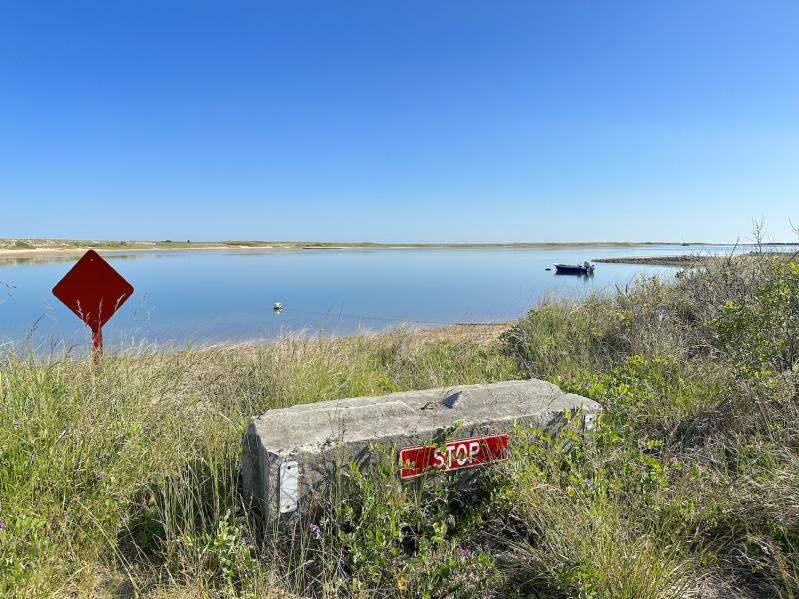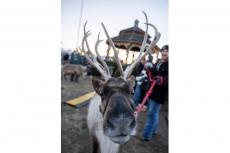The East Hampton Town Trustees agreed to permit a novel approach to eelgrass restoration in Napeague Harbor, and to issue an authorization letter allowing an application to the town’s water quality technical advisory committee to fund it, when the group met on Monday.
Eelgrass, which absorbs carbon dioxide and provides important habitat for juvenile marine life, is in sharp decline in the town’s waterways, and attempts to restore it have had mixed results.
Robert Vasiluth of SAVE Environmental received permission from the trustees last year to seed the harbor with eelgrass, which he did with John Dunne, the director of the town’s shellfish hatchery. On Monday, he asked for the trustees’ approval to embark on “a more productive, robust planting operation,” to be done in conjunction with the shellfish hatchery, the Peconic Baykeeper, Cornell Cooperative Extension, and Save the Sound.
Mr. Vasiluth glues eelgrass seeds onto clams, which are grown at the hatchery and seeded in town waters annually, a method he said has proven successful in other waterways such as Great South Bay. Last year, he collected seeds and, with Mr. Dunne and in a workshop with members of East Hampton High School’s Environmental Awareness Club, affixed them to clams with glue.
“The students produced 1,907 clams that had seeds glued to them,” Mr. Vasiluth said, with an average of four or five seeds per clam, a total of about 8,000. “They told me that they liked helping the nearby waterways, where they like to hang out and play and swim,” he said of the students. “They were happy to have the opportunity to do it.”
Later, he and Mr. Dunne seeded them in the harbor. “As far as the success of the eelgrass, we’re still waiting on that,” he said. The success rate should be known by the end of June. In the meantime, he asked that he be allowed to expand the project to an adjacent area in the harbor.
John Aldred read to his colleagues a letter of support from Mr. Dunne. He also asked Mr. Vasiluth about predation.
That “is going to be an issue,” was the reply, but it is just one of many hazards to the growth of eelgrass.
In planting eelgrass affixed to clams in Great South Bay with the Nature Conservancy, “we saw a lot of knobbed whelk, which are known to eat clams.” But, he said, “they’re part of the environment. When that knobbed whelk eats that clam, it’s bringing oxygen to the soil, it’s kind of tilling the soil, making the soil conducive to grow plants in. And clams that escape from getting eaten by knobbed whelk, they’ll dig more holes in other places and they’ll continue to be the engineers that they are, and bring oxygen to the soil.”
Algal blooms and high water temperature are greater hazards, he said. “That’s probably the reason why Napeague is suffering so bad, but is also one of the places where it still remains in East Hampton. The water temperature is so warm there. . . . However, there’s a small spot in Napeague Harbor that does hold eelgrass, and it’s believed that there’s upwelling of cold water, which just might be enough to keep it growing” and, ideally, expand.
Date for Clam Contest
Also at Monday’s meeting, the trustees set Sept. 29 as the date for their 33rd annual Largest Clam Contest. It has been a rough few years for the popular event, which serves as both a celebration of the town’s maritime heritage and a means for the trustees, who have jurisdiction over many of the town’s beaches, waterways, and bottomlands, to inform the public as to their role in the town’s governing.
In 2020, while a contest was held and prizes awarded, a public gathering was canceled because of the Covid-19 pandemic. Last year, in what was to be the biggest and best contest to date, to be held for the first time at the Amagansett Life-Saving and Coast Guard Station, inclement weather postponed the contest from Sept. 24 to Oct. 8. In the week preceding the rescheduled date, heavy rains forced the closure of most town waterways to the harvesting of shellfish, and the contest was canceled.




